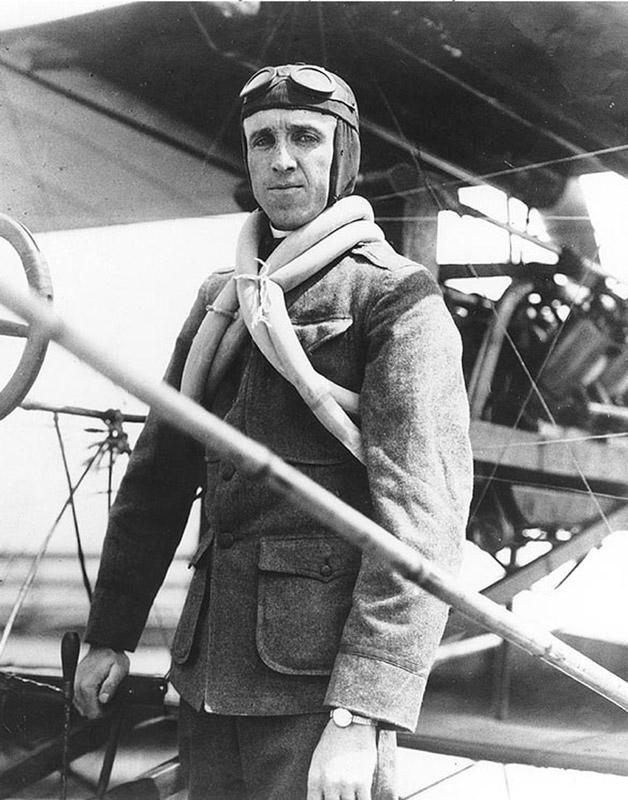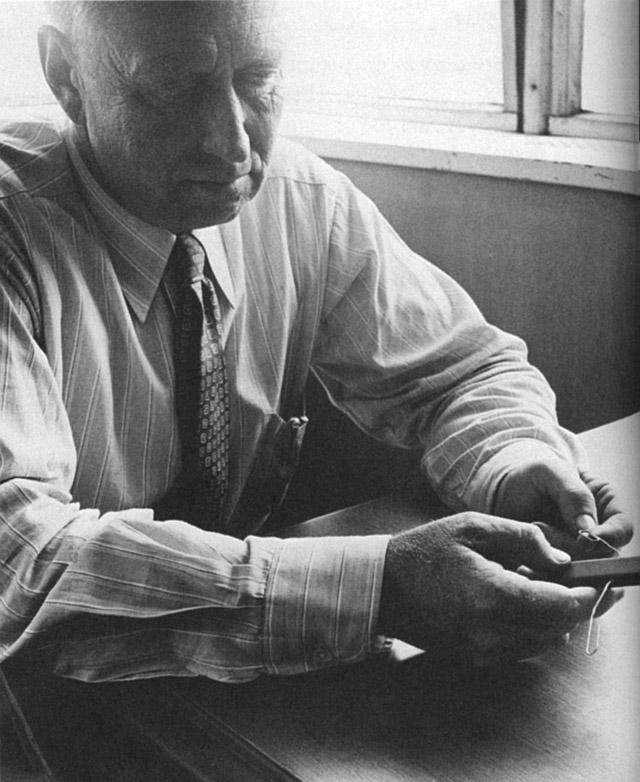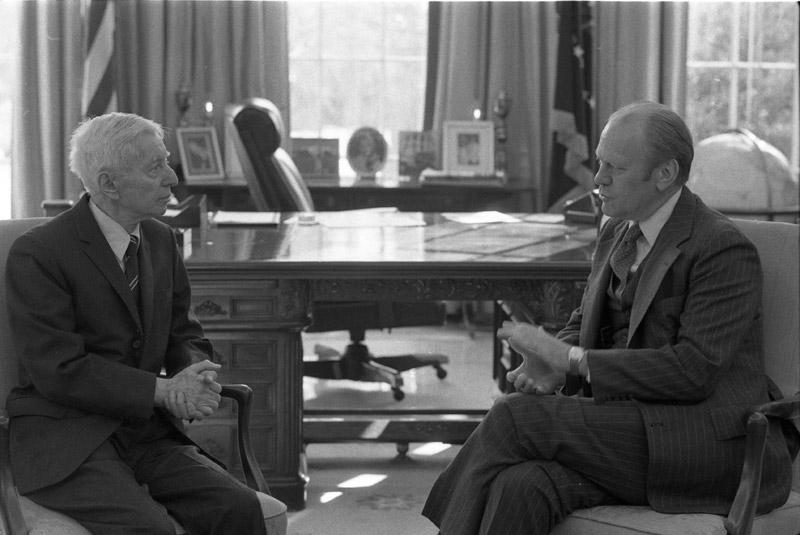-
Eugene Ely poses next to his Curtiss pusher biplane while wearing rubber inner tubes as a life preserver, c. 1911. Courtesy of the U.S. Naval Historical Center.
Aviation pioneer Eugene Ely made history when he launched his airplane from an improvised deck on the USS Birmingham on November 14, 1910. It was the first shipboard aircraft take off. Two...Read more
Aviation pioneer Eugene Ely made history when he launched his airplane from an improvised deck on the USS Birmingham on November 14, 1910. It was the first shipboard aircraft take off. Two months later, he succeeded in the first such landing on another improvised platform on the USS Pennsylvania. Ely's pioneering spirit paved the way for the development of aircraft carriers and naval aviation. Sadly, while his adventurous flying led to a fatal crash the following year, Ely's efforts would be recognized 22 years later when he was posthumously awarded the Distinguished Flying Cross.
-
President Roosevelt awards the Congressional Medal of Honor to Brigadier General James Doolittle, May 19, 1942. Courtesy of the Franklin D. Roosevelt Presidential Librar...Show morePresident Roosevelt awards the Congressional Medal of Honor to Brigadier General James Doolittle, May 19, 1942. Courtesy of the Franklin D. Roosevelt Presidential Library & Museum. Show less
Immediately following the attack on Pearl Harbor, President Franklin Roosevelt pressed his military commanders to conduct a bombing mission on Japan. Lt. Col. Jimmy Doolittle commanded the operatio...Read more
Immediately following the attack on Pearl Harbor, President Franklin Roosevelt pressed his military commanders to conduct a bombing mission on Japan. Lt. Col. Jimmy Doolittle commanded the operation. In what became known as the "Doolittle Raid," sixteen modified B-25 bombers launched off the USS Hornet in April 1942, successfully bombing targets in and around Tokyo.
The mission involved many characteristics that modern military leaders covet: the use of joint military forces; relatively few resources; executed over a short time period; achieved the element of surprise; and resulted in a major strategic effect.
Jimmy Doolittle earned a Medal of Honor from the President for his efforts.
-
Leroy Grumman demonstrates his Sto Wing design with paperclips and an eraser. Courtesy of Northrop Grumman Corporation.
Leroy Grumman was among the most significant pioneers of naval aviation. Grumman had already earned a degree in engineering and completed naval aviation training when he established his own manufac...Read more
Leroy Grumman was among the most significant pioneers of naval aviation. Grumman had already earned a degree in engineering and completed naval aviation training when he established his own manufacturing company in the 1930s. He patented an idea for retractable landing gear and developed folded wings to maximize storage space on carriers, demonstrating his vision with an eraser and paperclips. The resulting Sto-Wing design completely revolutionized carrier aircraft design and allowed ships to hold more planes.
The Grumman Aeronautical Engineering Co. attracted the best and brightest minds, and also produced top notch aircraft. As World War II broke out in Europe, orders for Grumman's F4F Wildcat fighters accelerated. When the U.S. entered the war, the Navy sent large orders for Wildcats, Hellcats, and TBF Avengers. Grumman's company employed approximately 700 people in 1939. That number grew to over 25,000 in 1943 as Grumman supplied the majority of aircraft for the U.S. Navy throughout the war.
After the war, Grumman developed the F9F Panther (which proved itself during the Korean War) and the A-6 Intruder and F-14 Tomcat.
-
President Gerald R. Ford meets with Admiral Hiram Rickover in the Oval Office, January 19, 1977 Courtesy the Gerald R. Ford Presidential Library
Admiral Hyman G. Rickover is considered the Father of the Nuclear Navy. His vision, dedication, and meticulous oversight resulted in the transition from conventional power to nuclear propulsion....Read more
Admiral Hyman G. Rickover is considered the Father of the Nuclear Navy. His vision, dedication, and meticulous oversight resulted in the transition from conventional power to nuclear propulsion.
As others developed bombs from the new atom-splitting technology, Rickover devoted his attention to using the power for other means. He pioneered the use of pressurized water reactors, which led not only to a new form of ship propulsion, but to the first civilian nuclear power plant in the United States.
In 1960, the USS Enterprise (CVN 65) was launched. It was the first nuclear super carrier, and could cover an unlimited distance without refueling for 20 to 25 years.
Over the course of Rickover's career, 121 submarines, three carriers, and nine other U.S. Naval warships received nuclear reactors for propulsion. His unceasing devotion to perfection paid high dividends - three decades of highly effective, accident-free nuclear reactors.







